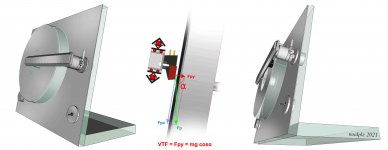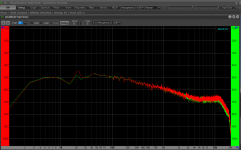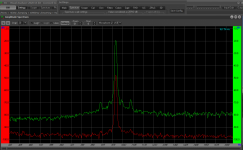ref post # 4320
Wow just Wow
Do you know how long I stared at your beautiful renditions ? (till my head hurt)
And the knowledge sitting there is awesome !
much more staring to come !
thank you
Wow just Wow
Do you know how long I stared at your beautiful renditions ? (till my head hurt)
And the knowledge sitting there is awesome !
much more staring to come !
thank you
Wow just Wow
Do you know how long I stared at your beautiful renditions ? (till my head hurt)
And the knowledge sitting there is awesome !
much more staring to come !
thank you
Hi Dennis, Carlo's work is inspiring isn't it!!!
I think those are all photos of Carlo's real arm projects, for sure they all were built and he is a wonderful photographer as well!
M
it is pretty much entirely his fault i started thinking about this and then a few others joined in and pushed me along!
Hi Dennis + Mike - thanks for the appreciation: it's just a dozen years of fun with our beloved TAs.
My goal has never been to make at home the best arm in the world, just the curiosity to see what happens by changing what.
carlo
Those photos are all of fully functional tonearms, some even very well sounding.
Except the Syrinx, an extensible Thales PLT: a complete failure that drove me to really understand the tracking forces, and learn how to use them correctly. So a great success, from my point of view
My goal has never been to make at home the best arm in the world, just the curiosity to see what happens by changing what.
carlo
Those photos are all of fully functional tonearms, some even very well sounding.
Except the Syrinx, an extensible Thales PLT: a complete failure that drove me to really understand the tracking forces, and learn how to use them correctly. So a great success, from my point of view
Hi Jim, i am out of my depth here.Hi, Mike,
I think the resonant frequency is still about 21-22 Hz although the all-over level is lower now. Can you run a 6-23 Hz sweep once more?
As I said before if you don't have too much trouble playing LPs, i.e., not too much mistracking, I would just ignore the resonant frequency.
Jim
My test record says the track sweeps 23 to 6hz and has a 1000hz tone “ to see the effects”
I run the sweep, I don’t know if one can record it but I took the attached series of screen shots.
To my eye I see the frequency gradually reducing from 23 to 6 Hz, no sudden lumps, just a gradually reducing peak to watch, getting wider (with the log curve?)
The 1000 is there but its second harmonic is lower than the 3rd and multiples thereof, I reduced the level of input and that seemed worse.
However, either way I see no effects of resonance, trouble is i also don’t know what I am looking for,
Would be great if you can read this or advise, thanks, mike
Attachments
-
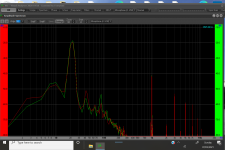 Screenshot (469).png573.5 KB · Views: 276
Screenshot (469).png573.5 KB · Views: 276 -
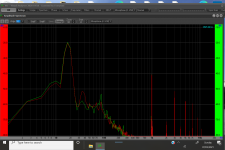 Screenshot (470).png574.6 KB · Views: 262
Screenshot (470).png574.6 KB · Views: 262 -
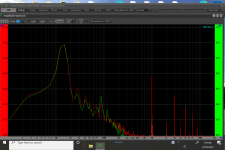 Screenshot (471).png577.5 KB · Views: 262
Screenshot (471).png577.5 KB · Views: 262 -
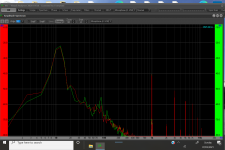 Screenshot (472).png575.5 KB · Views: 259
Screenshot (472).png575.5 KB · Views: 259 -
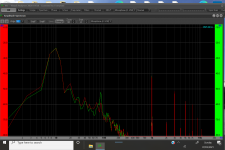 Screenshot (473).png574.1 KB · Views: 254
Screenshot (473).png574.1 KB · Views: 254 -
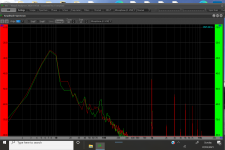 Screenshot (474).png577 KB · Views: 74
Screenshot (474).png577 KB · Views: 74 -
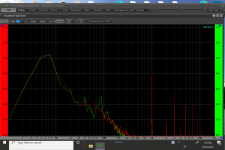 Screenshot (475).png576.1 KB · Views: 78
Screenshot (475).png576.1 KB · Views: 78 -
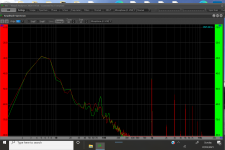 Screenshot (476).png573.5 KB · Views: 78
Screenshot (476).png573.5 KB · Views: 78
Friction.
The current configuration has quite low friction. It will only occasionally stick after re-assembly but seems to settle after a few sides and will only stick if i inadvertently dump dirt in the rails. However i would like it reduced and have more tolerance. This is ceramic 5mm balls on anodised aluminium surfaces
1. How can i reduce friction most easily and gain tolerance
Best to all
Mike
Has anyone experience, experiment or facts about different size balls?
I have only used 5mm, would bigger or smaller help reduce friction?
M
Has anyone experience, experiment or facts about different size balls?
I have only used 5mm, would bigger or smaller help reduce friction?
M
Hi Mike,
Don't think of it as friction, you actually need friction between the balls and rail for the ball to roll. Think of tyres on ice and on bitumen, there is no friction on ice so the tyre slides.
What you need with a passive LTA is low starting torque and rolling resistance. Low RR is a factor of surface roughness and hardness. Starting torque is wheel diameter and hardness, this is why Stagecoaches had large diameter wheels so they were easy to pull.
Larger diameter balls will have lower starting torque. Starting torque is critically important as all LP's are concentric to some degree. Low starting torque allows to carriage to traverse forward and backward with minimal effort and CL deflection.
Hi Jim, i am out of my depth here.
My test record says the track sweeps 23 to 6hz and has a 1000hz tone “ to see the effects”
I run the sweep, I don’t know if one can record it but I took the attached series of screen shots.
To my eye I see the frequency gradually reducing from 23 to 6 Hz, no sudden lumps, just a gradually reducing peak to watch, getting wider (with the log curve?)
The 1000 is there but its second harmonic is lower than the 3rd and multiples thereof, I reduced the level of input and that seemed worse.
However, either way I see no effects of resonance, trouble is i also don’t know what I am looking for,
Would be great if you can read this or advise, thanks, mike
What you are playing there is a cartridge resonant frequency sweep 1kHz modulated with the sweep frequency. When you listen to it you will hear when the cartridge starts to resonate as the warble will be clearly audible.
Many thanks Warren, i think of these as starting resistance and rolling resistance, i will use those terms now if i remember. i will try and experiment with some larger diameters soon. With the feel i have developed in my experiments, nothing we use will actually slide (BB, balls, wheels etc) unless the weight is removed from it, that's why i went to the 3 point support so that cannot happen.Hi Mike,
Don't think of it as friction, you actually need friction between the balls and rail for the ball to roll. Think of tyres on ice and on bitumen, there is no friction on ice so the tyre slides.
What you need with a passive LTA is low starting torque and rolling resistance. Low RR is a factor of surface roughness and hardness. Starting torque is wheel diameter and hardness, this is why Stagecoaches had large diameter wheels so they were easy to pull.
Larger diameter balls will have lower starting torque. Starting torque is critically important as all LP's are concentric to some degree. Low starting torque allows to carriage to traverse forward and backward with minimal effort and CL deflection.
I will listen again Warren, when i first listened i could discern nothing, so when i started with VA i looked at that, i cannot do both so will wire for one at a time and have a listen as well, mikeWhat you are playing there is a cartridge resonant frequency sweep 1kHz modulated with the sweep frequency. When you listen to it you will hear when the cartridge starts to resonate as the warble will be clearly audible.
Hi Warren, I have played that sweep again several times through the speakers, at the beginning i can hear the 23Hz which gradually dies away sub audibly or maybe my speaker filter takes it out below 20Hz.What you are playing there is a cartridge resonant frequency sweep 1kHz modulated with the sweep frequency. When you listen to it you will hear when the cartridge starts to resonate as the warble will be clearly audible.
Either way the 1khz plays perfectly sweetly all the way through and the stylus looks stable as well.
After a while i detect a slight frequency variation on the 1khz, and at the same time the test record is slightly eccentric. i believe this slight variation is in time with the eccentricity.
So i detect no bad result on the test at all.
I will work on friction in the coming weeks and i expect that will improve eccentricity performance, it will be interesting to see
Thanks, best
Mike
Hi Mike,
I believe the 1 kHz in your lower frequency sweep is a pilot signal. You don't need to pay attention to the 1 kHz. If you couldn't hear anything while you were playing the 6-23 Hz, you may look closely at the movements of the cartridge. The cartridge will move erratically at the resonant frequency.
Here is a video to show you the resonant frequency.
arm/cartridge resonance lateral 17 Hz - 5 Hz band 2 - YouTube
You may see my arm resonant frequency is about 5 Hz.
Jim
I believe the 1 kHz in your lower frequency sweep is a pilot signal. You don't need to pay attention to the 1 kHz. If you couldn't hear anything while you were playing the 6-23 Hz, you may look closely at the movements of the cartridge. The cartridge will move erratically at the resonant frequency.
Here is a video to show you the resonant frequency.
arm/cartridge resonance lateral 17 Hz - 5 Hz band 2 - YouTube
You may see my arm resonant frequency is about 5 Hz.
Jim
Many thanks Jim,Hi Mike,
I believe the 1 kHz in your lower frequency sweep is a pilot signal. You don't need to pay attention to the 1 kHz. If you couldn't hear anything while you were playing the 6-23 Hz, you may look closely at the movements of the cartridge. The cartridge will move erratically at the resonant frequency.
Here is a video to show you the resonant frequency.
arm/cartridge resonance lateral 17 Hz - 5 Hz band 2 - YouTube
You may see my arm resonant frequency is about 5 Hz.
Jim
On mine it just plays the pilot signal through, no disruption at any point that i can detect, certainly it never miss-tracks like the video.
I conclude i must be looking for something that isn't there, maybe the fundamental resonant frequency is higher up? - i remember that Niffy calculated that on his arm it was above the audible spectrum. i am not sure if he shared those calculations, i shall take a look see, mike
Hi Mike,
What Niffy calculated was the first bending mode of his carriage to be about 19kHz. This is the resonance of the arm based on its stiffness not the interaction between the arm and cartridge.
If you are playing the cartridge vertical and horizontal resonance tracks and not hearing the warble then then arm/cart resonance is out of the frequency range 23-6Hz which is not good. Too high and the music will excite the arm and too low seismic feedback will excite the arm into resonance. As Jim said this resonance in your arm seems to be around 20Hz, you need to lower this to about 12Hz.
What Niffy calculated was the first bending mode of his carriage to be about 19kHz. This is the resonance of the arm based on its stiffness not the interaction between the arm and cartridge.
If you are playing the cartridge vertical and horizontal resonance tracks and not hearing the warble then then arm/cart resonance is out of the frequency range 23-6Hz which is not good. Too high and the music will excite the arm and too low seismic feedback will excite the arm into resonance. As Jim said this resonance in your arm seems to be around 20Hz, you need to lower this to about 12Hz.
what if
...Just imagine an arm moving purely vertically without pivoting: a linear tonearm in its purest form, horizontally AND vertically. # 4281 Directdriver - 3/2021
...beginning to despair to find a solution: could be something like the one below (see attachments # 4060 et seq.) but having to go on the moon (1/6 gravity) to listen a record seems rather uncomfortable... # 4060 carlo - 8/2020
No need to go till there, maybe. Maybe just tilting the turntable by 80° degrees would be enough? (VTF = Fpy = mg cos α)
carlo
Maybe unfeasible, at least for me: but finding how to fool the earth's gravity it’s however fun
...Just imagine an arm moving purely vertically without pivoting: a linear tonearm in its purest form, horizontally AND vertically. # 4281 Directdriver - 3/2021
...beginning to despair to find a solution: could be something like the one below (see attachments # 4060 et seq.) but having to go on the moon (1/6 gravity) to listen a record seems rather uncomfortable... # 4060 carlo - 8/2020
No need to go till there, maybe. Maybe just tilting the turntable by 80° degrees would be enough? (VTF = Fpy = mg cos α)
carlo
Maybe unfeasible, at least for me: but finding how to fool the earth's gravity it’s however fun
Attachments
Carlo, this looks a great possibility, an intriguing angle.VTF = Fpy = mg cos α)
carlo
Maybe unfeasible,
To adjust VTF, just vary α.
The rail configuration you've drawn is the lowest friction rail i have measured, two balls on the lower rail and one above with a slight side load like you've designed.
Hi all,
I've been rather busy and haven't been paying attention to this thread for a little while. Looks like I have quite a few pages to catch up on. Looking forward to seeing what new innovations you have all come up with.
Thanks Jim.
I haven't made many changes to my arm in the last couple of years. The only significant modification I've made was to add a slightly heavier counterweight. This slightly decreased vertical effective mass and increased lateral. The change in sound is subtle but in the right direction.
Niffy
Head down for some serious catching up.
I've been rather busy and haven't been paying attention to this thread for a little while. Looks like I have quite a few pages to catch up on. Looking forward to seeing what new innovations you have all come up with.
For mechanical linear arm, I highly recommend Niffy's arm. In my opinion, there are simply no mechanical linear arms better than his arm so far no matter DIY or commercial.
Jim
Thanks Jim.
I haven't made many changes to my arm in the last couple of years. The only significant modification I've made was to add a slightly heavier counterweight. This slightly decreased vertical effective mass and increased lateral. The change in sound is subtle but in the right direction.
Niffy
Head down for some serious catching up.
Hi Mike,
I've had a look at the multitude of plots you've posted. I'm thinking that the ~20hz peek might not be the cartridge compliance/effective mass resonance but something else in the system. It could be that the friction of your ball-point-pen bearings is enough to critically or even over damp vertical motion which will reduce the amplitude of any resonance making it very difficult to see or hear. Not necessarily a bad thing as long as it isn't over damped. The one peek that does seem to move when you add weight is the one around 10hz. It did seem to lower in frequency with additional mass which is what would be expected. It is difficult to ascertain whether this resonance is the vertical, horizontal or a combination. I'm guessing that it is the vertical resonance and that the lateral resonance, due to the mass of the carriage, is below 6hz (which isn't a bad thing in my book. It's way above the frequency of record eccentricity at 0.55hz)
The ~20hz peek might be a longitudinal bending mode of the rail. Try adding a large lump of blutak to the left hand end of the rail and see if this moves the 20hz peek to a lower frequency. A long shot but worth a go. At what location on the record is the test track?
Finally, the latest version of your arm is looking really nice, much tidier than the previous version. Good work.
Niffy
I've had a look at the multitude of plots you've posted. I'm thinking that the ~20hz peek might not be the cartridge compliance/effective mass resonance but something else in the system. It could be that the friction of your ball-point-pen bearings is enough to critically or even over damp vertical motion which will reduce the amplitude of any resonance making it very difficult to see or hear. Not necessarily a bad thing as long as it isn't over damped. The one peek that does seem to move when you add weight is the one around 10hz. It did seem to lower in frequency with additional mass which is what would be expected. It is difficult to ascertain whether this resonance is the vertical, horizontal or a combination. I'm guessing that it is the vertical resonance and that the lateral resonance, due to the mass of the carriage, is below 6hz (which isn't a bad thing in my book. It's way above the frequency of record eccentricity at 0.55hz)
The ~20hz peek might be a longitudinal bending mode of the rail. Try adding a large lump of blutak to the left hand end of the rail and see if this moves the 20hz peek to a lower frequency. A long shot but worth a go. At what location on the record is the test track?
Finally, the latest version of your arm is looking really nice, much tidier than the previous version. Good work.
Niffy
Hi Mike,
I've had a look at the multitude of plots you've posted. ..........
The ~20hz peek might be a longitudinal bending mode of the rail. Try adding a large lump of blutak to the left hand end of the rail and see if this moves the 20hz peek to a lower frequency. A long shot but worth a go. At what location on the record is the test track?
Niffy
Thanks Niffy, your input is much appreciated.
I will experiment as you've suggested and report back.
As you will have realised i enjoy the hands on experimentation and i keep on mucking around with things to try and both learn and improve things. At the moment i am trying a vertically oriented rail system with one rail above the other that showed promising low resistance on the measurement rig. so i will need to change that back out before trying those things.
The resonance test track is 80-85% across, last track but one, pink noise 30 %, second track and the 1kz at 85%.
best, mike
No need to go till there, maybe. Maybe just tilting the turntable by 80° degrees would be enough? (VTF = Fpy = mg cos α)
Hi Carlo,
you are a smart man. You are definitely thinking outside of the proverbial box!
Sincerely,
Ralf
I will experiment as you've suggested and report back.
Good morning Niffy, I have experimented a lot and never found anything that moves that~23Hz spike.
I realise I have recently done an experiment that rules out the rails.
Recently i built a set of brass rails that i could dress flat and polish, they gave a worthwhile reduction in resistance. The rail mass would be much greater than the previous anodised.
However i took a series of plots and while the performance in other areas seems improved the 23Hz lump stays resolutely still.
The set up i have means the arm base is clamped to the TT support plinth and my OL TT has adjustable TT supports, and in their normal mount the arm and TT are both above those, my mount means the TT supports are in between, i suspect I have spoilt all OL's careful and good work in that. i will try bridging those and see what happens next............
- Home
- Source & Line
- Analogue Source
- DIY linear tonearm
